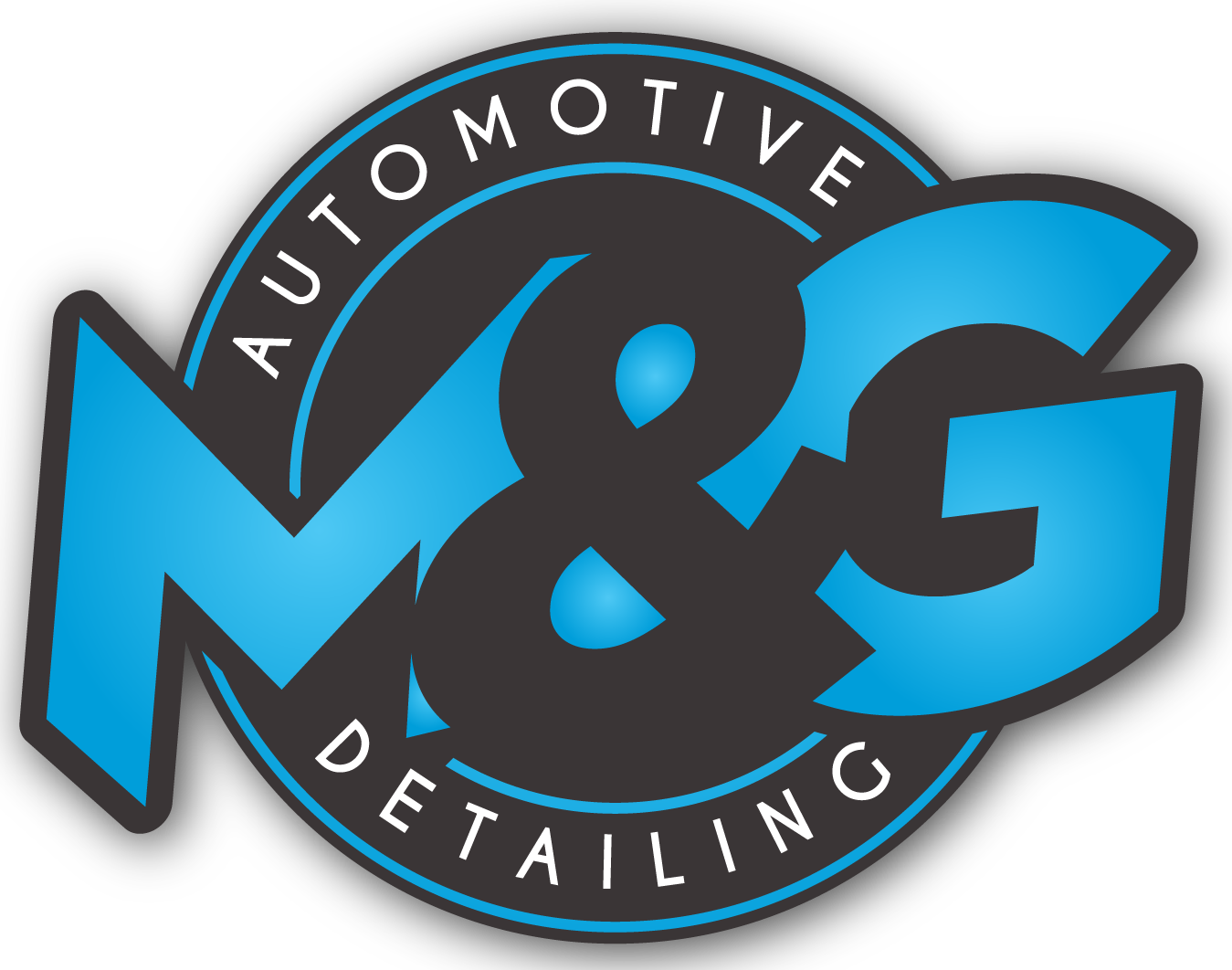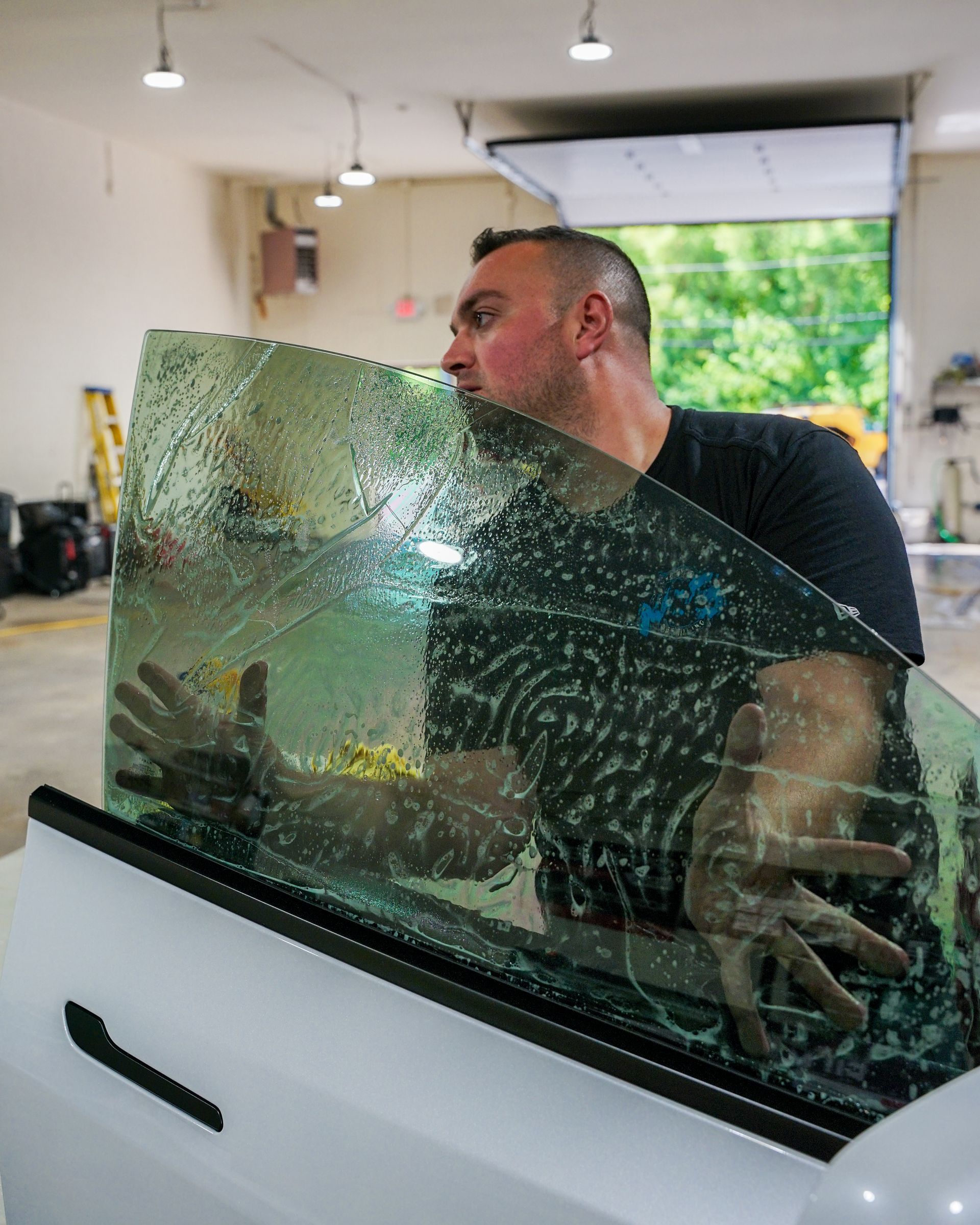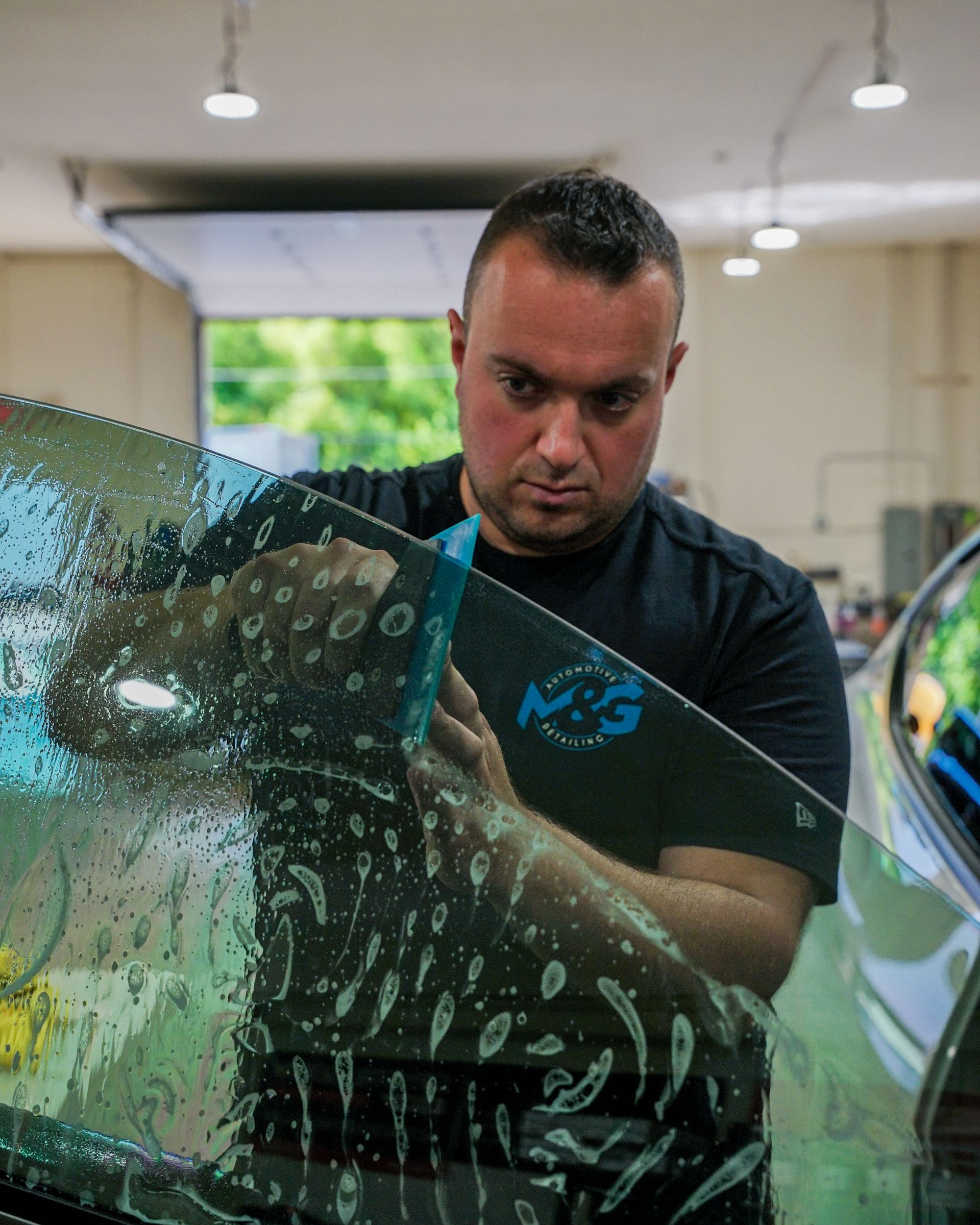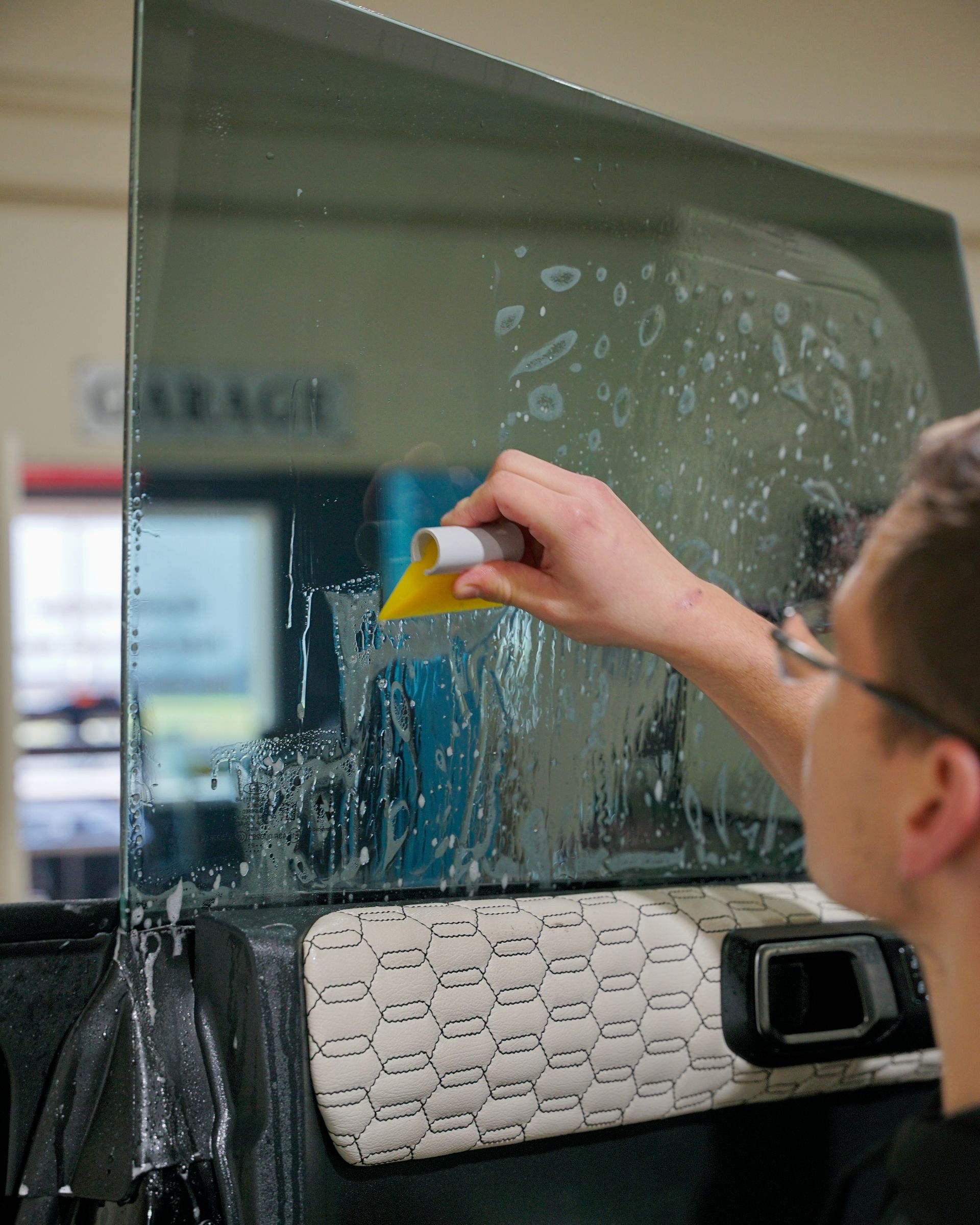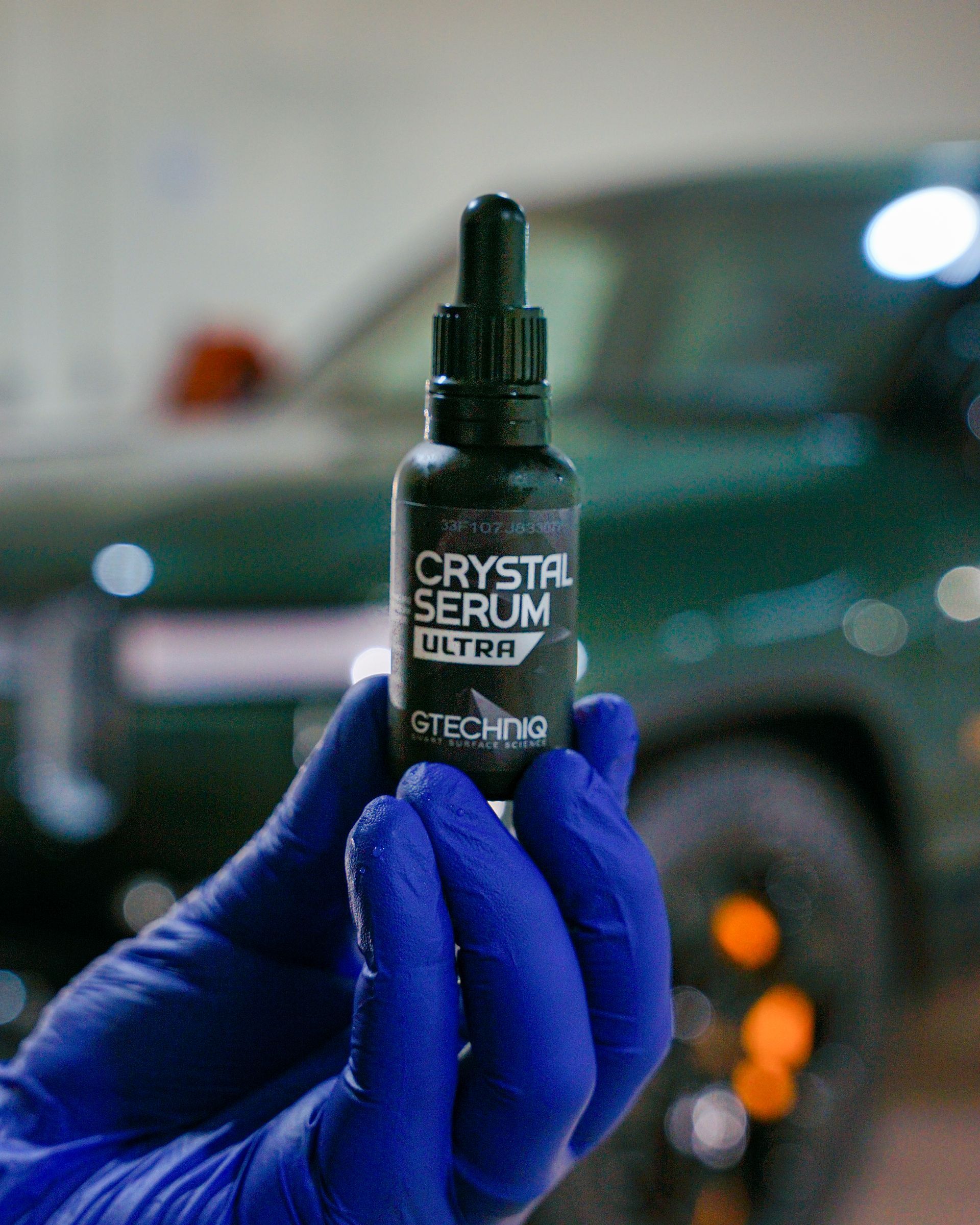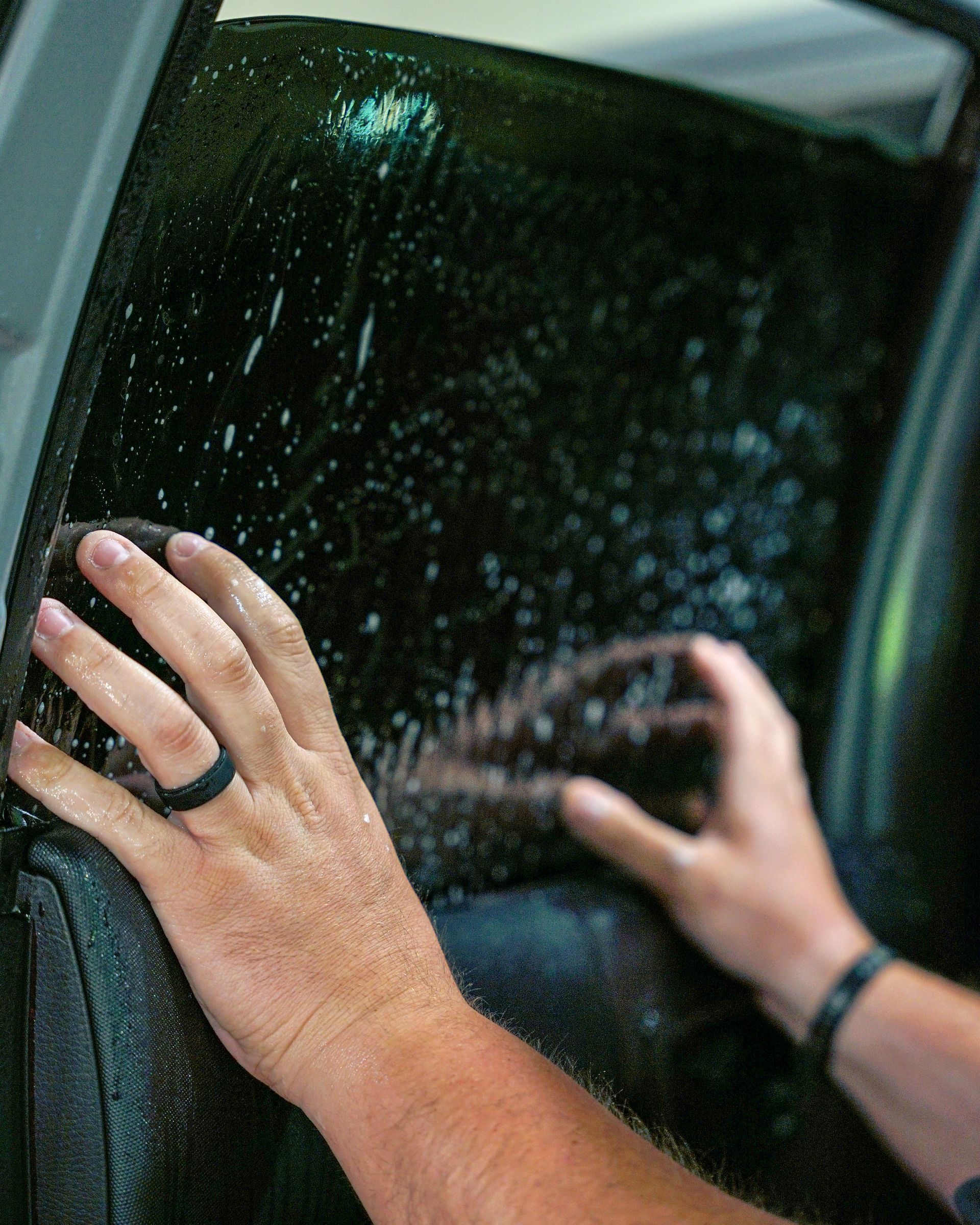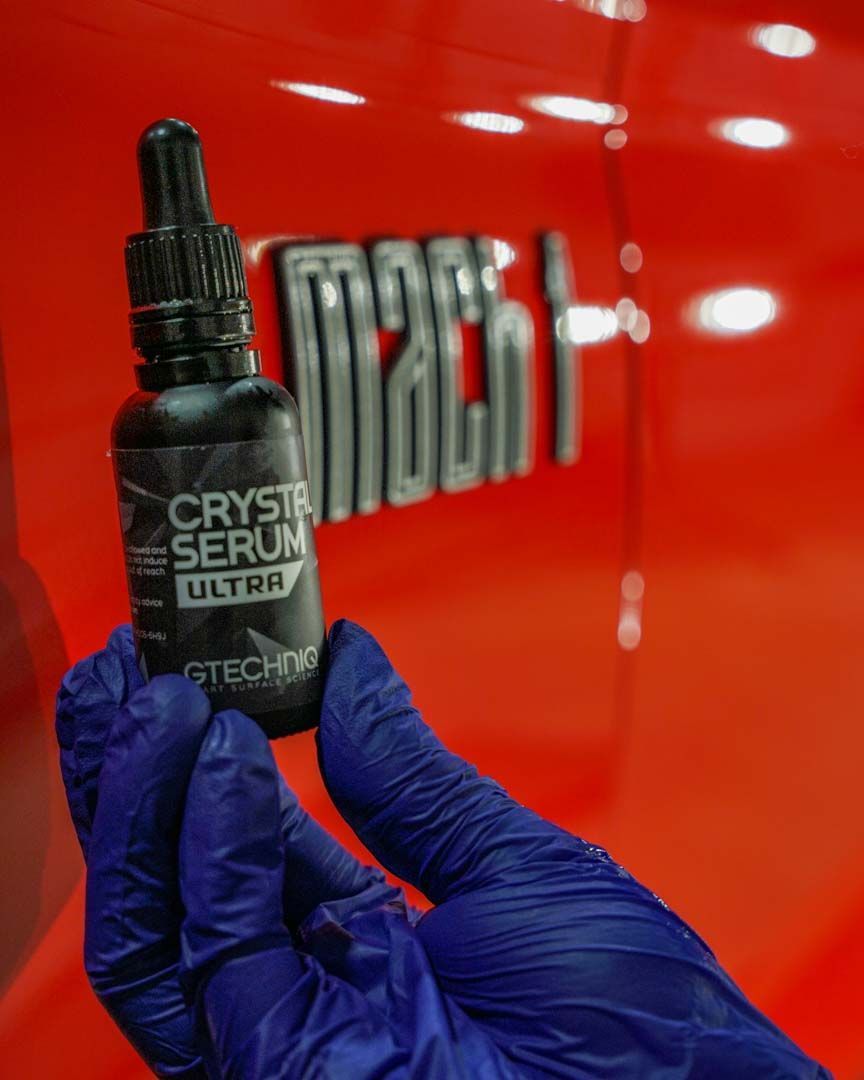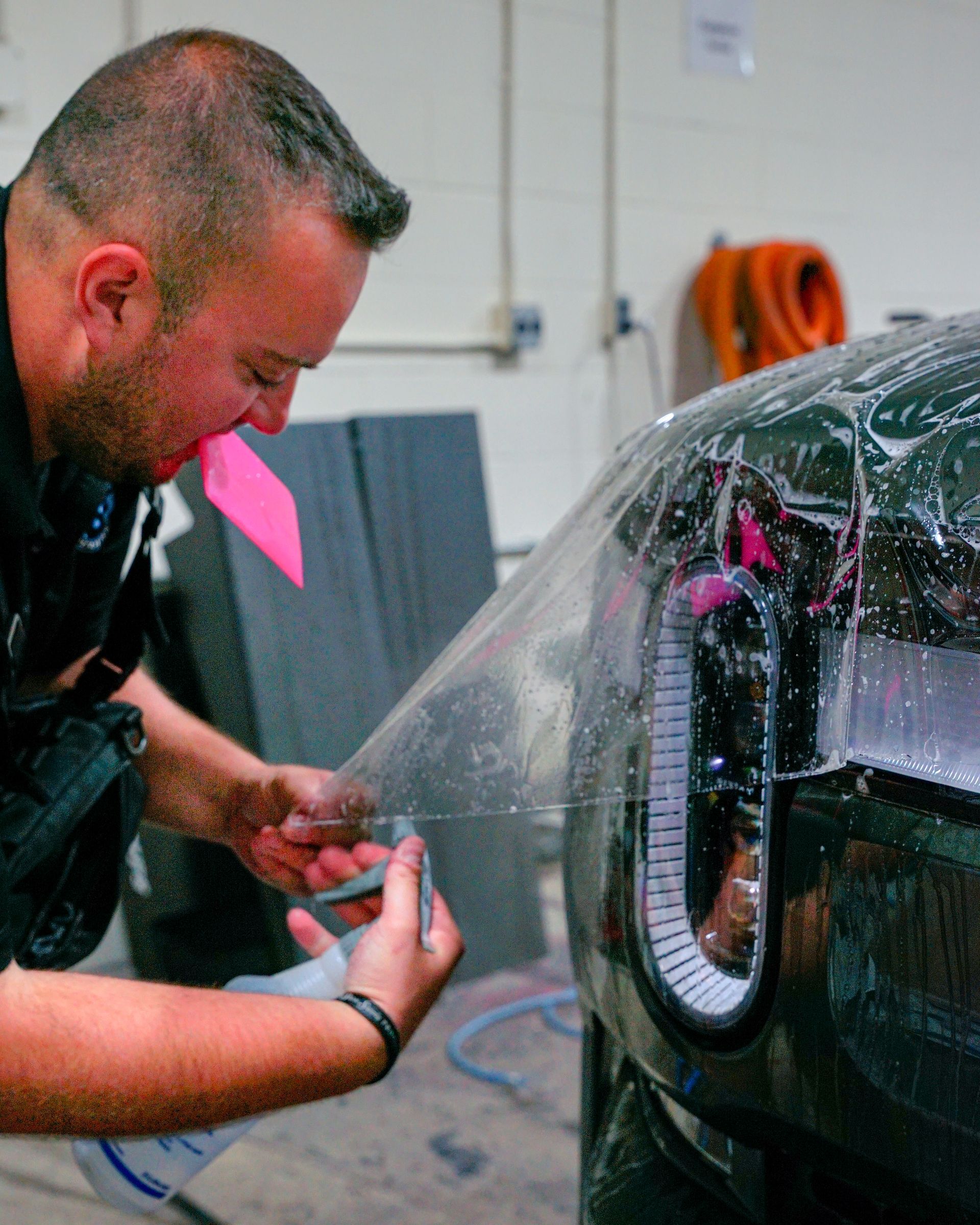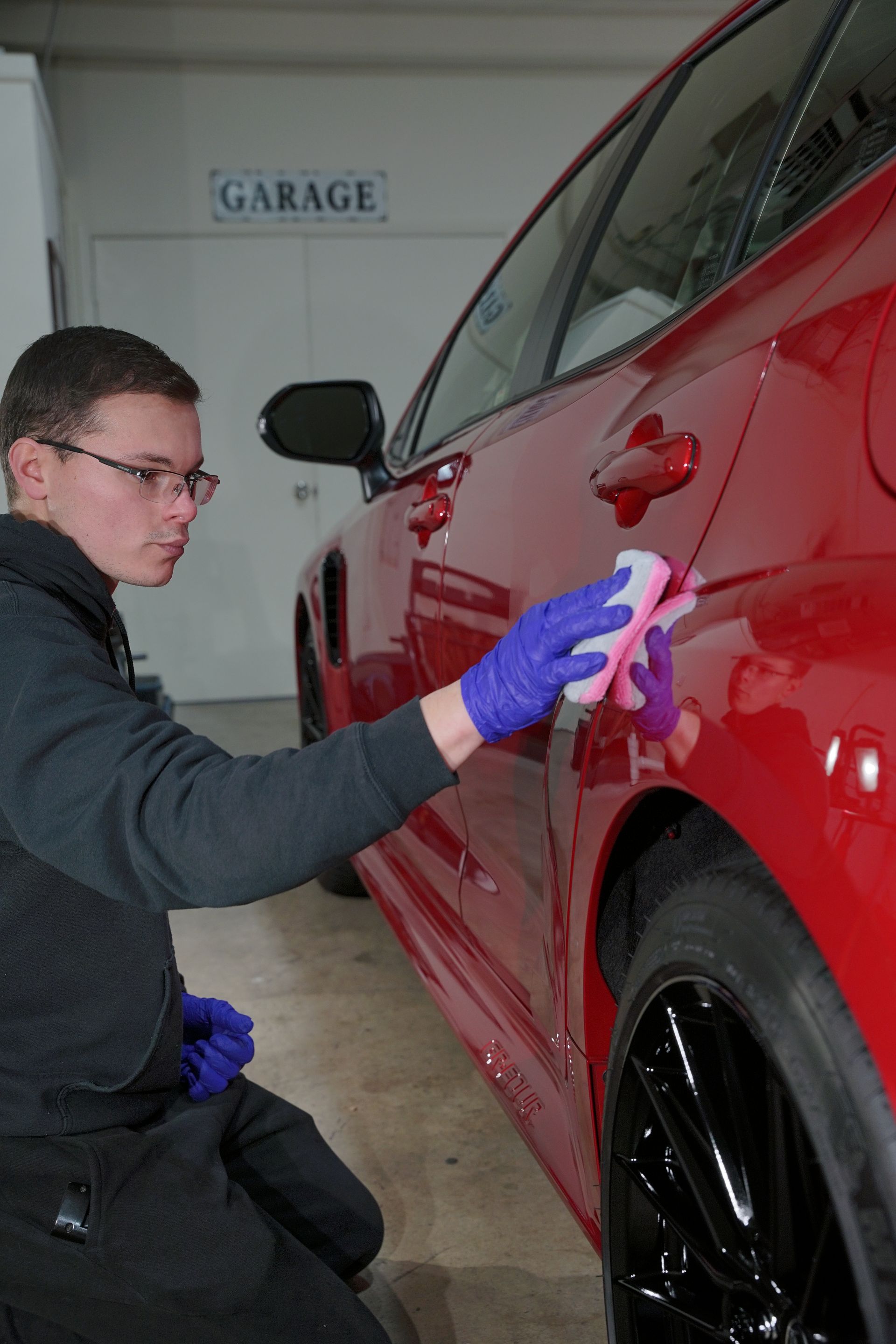The Differences Between Dyed, Metalized, and Ceramic Window Tints
When it comes to enhancing your vehicle’s comfort and style, choosing the right window tint can feel overwhelming. You might find yourself asking, "Which type is best for me?" With options like dyed, metalized, and ceramic tints, each offering unique benefits and drawbacks, making a decision requires understanding what you truly need.
The key differences among dyed, metalized, and ceramic auto window tints lie in their composition and performance: dyed tints are cost-effective but may fade over time; metalized tints reflect heat and are durable but can interfere with electronic signals; while ceramic tints offer superior heat rejection and UV protection without signal interference but come at a higher cost. Understanding these distinctions will help you choose the best tint type for your vehicle based on your specific needs.
Overview of Window Tint Types
When it comes to window tinting, there are several options available, each with its own unique benefits and drawbacks. The type of tint you choose can impact your vehicle’s comfort, appearance, and overall functionality. Here’s a breakdown of the most popular types—dyed, metalized, and ceramic window tints—to help you decide which one might be best suited for your needs.
Dyed Window Tint
Dyed window tint is a popular choice due to its affordability, making it accessible for a wide range of budgets. This tint is created by layering dye between an adhesive and a protective coating, resulting in a darker appearance that many appreciate for added privacy. However, the dye can fade over time from prolonged sun exposure, eventually requiring replacement to maintain its look and effectiveness. While dyed tints block up to 99% of harmful UV rays, they typically offer moderate heat rejection at around 40%. This means they are less effective at keeping your car cool compared to other options, so they may not be ideal in extremely hot climates.
Metalized Window Tint
Metalized window tint is made with tiny metallic particles that help reflect heat away from your vehicle, increasing its effectiveness in temperature control. Known for its durability, this type of tint resists scratches better than dyed tints, maintaining its appearance for a longer period. However, the metallic content can sometimes interfere with electronic signals, affecting GPS and cellphone reception. Metalized tints offer excellent UV protection, blocking up to 99% of harmful rays while providing around 60% heat rejection. Although some users find the shiny appearance less appealing, this option remains popular for those prioritizing heat control and scratch resistance.
Ceramic Window Tint
Ceramic window tint is regarded as the premium option, utilizing advanced non-metallic, non-conductive ceramic particles for superior performance. It offers the highest level of heat rejection—up to 70%—and provides excellent UV protection without compromising visibility. Due to its quality materials, ceramic tint is more expensive, but its durability can justify the cost over time. This tint is a top choice for those who value clarity, aesthetics, and long-lasting performance, as it resists fading and bubbling better than other options. While the upfront investment may be higher, the extended benefits make it a worthwhile choice for many drivers.
Each tint type caters to different needs based on budget, heat rejection, and appearance preferences. Understanding these variations will enable you to make an informed decision that enhances comfort, protects your vehicle’s interior, and improves your driving experience. With this knowledge, you can select the best tint to suit your specific requirements.
Characteristics of Dyed Window Tints
At their core, dyed window tints consist of a layer of dye applied between the adhesive layer and a protective coating. This simple yet effective design allows the dye to absorb sunlight, thereby reducing solar heat entering the vehicle. Imagine stepping into your car on a hot summer day; the difference in temperature can be quite noticeable. A quality dyed tint might reduce internal car temperatures by as much as 50%, creating a more comfortable environment for you and your passengers.
Pros of Dyed Window Tints
- Affordable Option: Dyed window tints are known for their affordability, making them the most cost-effective choice for budget-conscious consumers.
- Enhanced Appearance: With a dark, non-reflective surface, dyed tints give vehicles an aesthetically pleasing look that adds privacy and sophistication.
- Smooth, Non-Metallic Finish: Dyed tints provide a sleek finish without a metallic sheen, creating a clean, seamless appearance on windows.
- No Interference with Electronics: Since these tints are non-metallic, they won’t disrupt electronic signals, allowing smooth use of devices like phones and GPS.
Cons of Dyed Window Tints
- Fading Over Time: Dyed window tints can lose their color and effectiveness under prolonged sun exposure, often requiring replacement every few years.
- Limited Heat Reduction: While they reduce some heat, dyed tints are less effective than metalized or ceramic options, potentially increasing reliance on air conditioning during hot days.
- Lower Durability: Dyed tints are more prone to scratches and general wear, making them less ideal for vehicles exposed to rough conditions.
Attributes of Metalized Window Tints
Metalized window tints are a popular choice among car owners for good reason. They contain tiny particles of metal that serve multiple purposes, making them stand out in the world of window films. These metallic layers do more than just darken your windows; they effectively reflect harmful UV rays and decrease heat buildup inside your vehicle. Anyone who has ever stepped into a car on a hot day can appreciate the fight against heat retention, as metalized tints can reduce interior temperatures by up to 65%. When sunlight hits the tinted windows, the metallic particles reflect both heat and sunlight away from the glass, minimizing what enters your car's interior. This not only keeps things cooler but also reduces reliance on air conditioning, which can ultimately save you money on fuel over time.
Pros of Metalized Window Tints
- Durability: Metalized tints are often praised for their strength. Unlike their dyed counterparts, which can fade over time, metalized options maintain their appearance despite prolonged exposure to harsh sunlight.
- Heat Rejection: Thanks to the reflective properties of the metallic particles, these tints excel in reducing heat penetration, creating a more pleasant environment inside your vehicle even during sweltering summer months.
- UV Protection: One notable advantage is their effectiveness at blocking up to 99% of harmful UV rays. This protects your skin from potential damage and helps preserve your car's interior from fading and cracking due to sun exposure.
Cons of Metalized Window Tints
- Signal Interference: The very feature that makes metalized tints effective can lead to downsides; users may find that GPS devices or cell phone signals experience interference due to metallic content.
- Reflective Appearance: While some might appreciate the shiny look, others may find it off-putting. The reflective quality can create an aesthetic that not every driver prefers.
- Cost: While metalized window tinting is generally affordable compared to ceramic options, it tends to be pricier than standard dyed tints—making budgeting a critical consideration.
Properties of Ceramic Window Tints
Ceramic window tints are indeed the crème de la crème of automotive window films. Made from advanced nano-ceramic particles, these tints are designed to block heat while providing a host of other remarkable benefits. Because they are non-conductive and non-metallic, they accomplish these feats without interfering with electronic signals—an essential trait for modern vehicles equipped with GPS systems and mobile devices. Imagine driving on a hot summer day with the sun blazing down, yet feeling comfortable inside your vehicle as the ceramic tint effectively shields you from excessive heat.
Pros of Ceramic Window Tints
- Superior Heat Rejection: Their capability to keep the heat at bay is unparalleled. They can improve comfort levels within your vehicle while lessening the strain on your AC system, leading to better fuel efficiency.
- No Signal Interference: Unlike metalized options that can disrupt connectivity, ceramic films ensure that you stay connected without any interruptions.
- Clear Visibility: One of the standout features is their clarity—allowing you to enjoy unobstructed views at all times, whether in bright daylight or during night drives.
- UV Protection: Offering remarkable protection against harmful rays ensures not only your health but also preserves your car’s interior fabrics from fading and temperature damage.
- Durability: These films are known for their long lifespan, exhibiting resistance to scratches and fading that can occur with regular use.
Cons of Ceramic Window Tints
- Cost: While they provide exceptional value in terms of performance and longevity, ceramic tints come with a higher upfront cost compared to less advanced options.
- Professional Installation: Achieving optimal results typically requires experienced installers due to the intricate nature of the film's application process. This necessity can add a significant amount to the overall expense.
Armed with this information about ceramic tints, it becomes easier to understand their unique advantages as we transition into examining how they differ in performance when compared with other tint options available on the market.
Comparing Performance of Different Tints
When you’re considering window tinting, performance often takes top priority. The choice between dyed, metalized, and ceramic tints can significantly affect not only your vehicle’s aesthetics but also its comfort, safety, and durability. Think about it: Imagine driving on a sweltering summer day, the sun beaming directly through the windshield—the right tint can make a world of difference.
- Heat Rejection: Starting with heat rejection, this is a critical aspect for many drivers living in warmer climates. Dyed tints typically offer low heat rejection around 35–50%, which may not suffice if you're looking to keep your car cooler during intense sunlight. Metalized tints improve upon this with a range of 50–70% heat rejection, reflecting sunlight more effectively and lowering your reliance on air conditioning, ultimately saving on fuel costs. However, ceramic tints take the crown with an impressive 70-90% heat rejection rate.
- UV Protection: All three types of tints excel at blocking harmful UV rays; they can block up to 99% of these rays, protecting both occupants and the car's interior from potential damage. This characteristic is essential in preventing fading upholstery or cracked dashboards over time. While they all provide substantial UV protection, ceramic tints still shine brightly—not only do they match their counterparts in performance, but their durability means you won’t have to worry about degradation over time as you might with dyed options.
- Signal Interference: For those who rely heavily on GPS or mobile signals while driving, this can be a significant concern. Dyed and ceramic tints are safe bets since they cause no signal interference, allowing your devices to function smoothly without disruptions. On the other hand, metalized tints may pose challenges by potentially scrambling signals due to their reflective nature because they interrupt electronic frequencies. So if you depend on consistent connectivity while driving, staying away from metalized options would be wise.
- Durability: When you think about longevity, it becomes evident that ceramic tints outperform the others hands down. With a lifespan of 15-25 years, ceramic films resist fading and bubbling much more effectively than dyed or even metalized films, which last around 5-10 years and 10-15 years, respectively. Investing in long-lasting materials typically results in less headache and more savings in the long run—a strong consideration when weighing your options.
- Appearance: Aesthetics matter! Dyed tints offer a non-reflective dark finish that appeals particularly to users seeking privacy. Conversely, metalized tints have a shiny reflective quality that some may find attractive—but not everyone will appreciate its bling. Ceramic tints manage to strike a balance with their clear yet natural look that pervades elegance without being overly flashy.
- Cost: As for cost comparisons, dyed tints are the most budget-friendly option at around $100-$300 per vehicle; metalized tints hover at $200-$500; while ceramic tints stand proudly at $400-$800—a notable investment but one justified by their numerous benefits.
Understanding these performance indicators brings clarity to the varying options available and naturally leads us to explore what factors should influence your decision-making process regarding window tinting.
Key Factors in Choosing a Tint
- Budget Constraints: Determine your budget before choosing a tint. Dyed tints are the most affordable, costing around $100-$300, making them a budget-friendly entry option.
- Heat Rejection Needs: Consider the heat rejection level, especially if you live in a hot climate. Metalized and ceramic tints provide enhanced heat-blocking properties, keeping your vehicle cooler.
- Signal Interference Concerns: If you rely on GPS, radio, or cellphone signals, ceramic tints are best as they avoid signal disruption, ensuring smooth navigation and communication.
- Aesthetic Preferences: Think about your preferred look. Ceramic tints offer a sleek, modern appearance without glare, while dyed tints provide a classic, non-reflective look.
- Local Regulations: Check local tinting laws for permissible darkness and reflectivity levels to avoid fines or penalties for non-compliance.
By considering budget, heat rejection, signal needs, aesthetics, and legalities, you can select the window tint that best fits your needs and style.
Trusted Window Tinting Services in Cherry Hill, NJ
Enhance your vehicle’s comfort, privacy, and style with M&G Automotive Detailing’s
trusted window tinting services in Cherry Hill, NJ. Our experienced team provides expertly applied tints that not only block harmful UV rays and reduce interior heat but also add a sleek, finished look to your ride. With top-quality materials and precision installation, M&G Automotive Detailing ensures that every window tint delivers lasting durability and protection. Upgrade your driving experience today—contact M&G Automotive Detailing to explore our premium window tinting options! Call us at (609) 923-3123 to get started!
